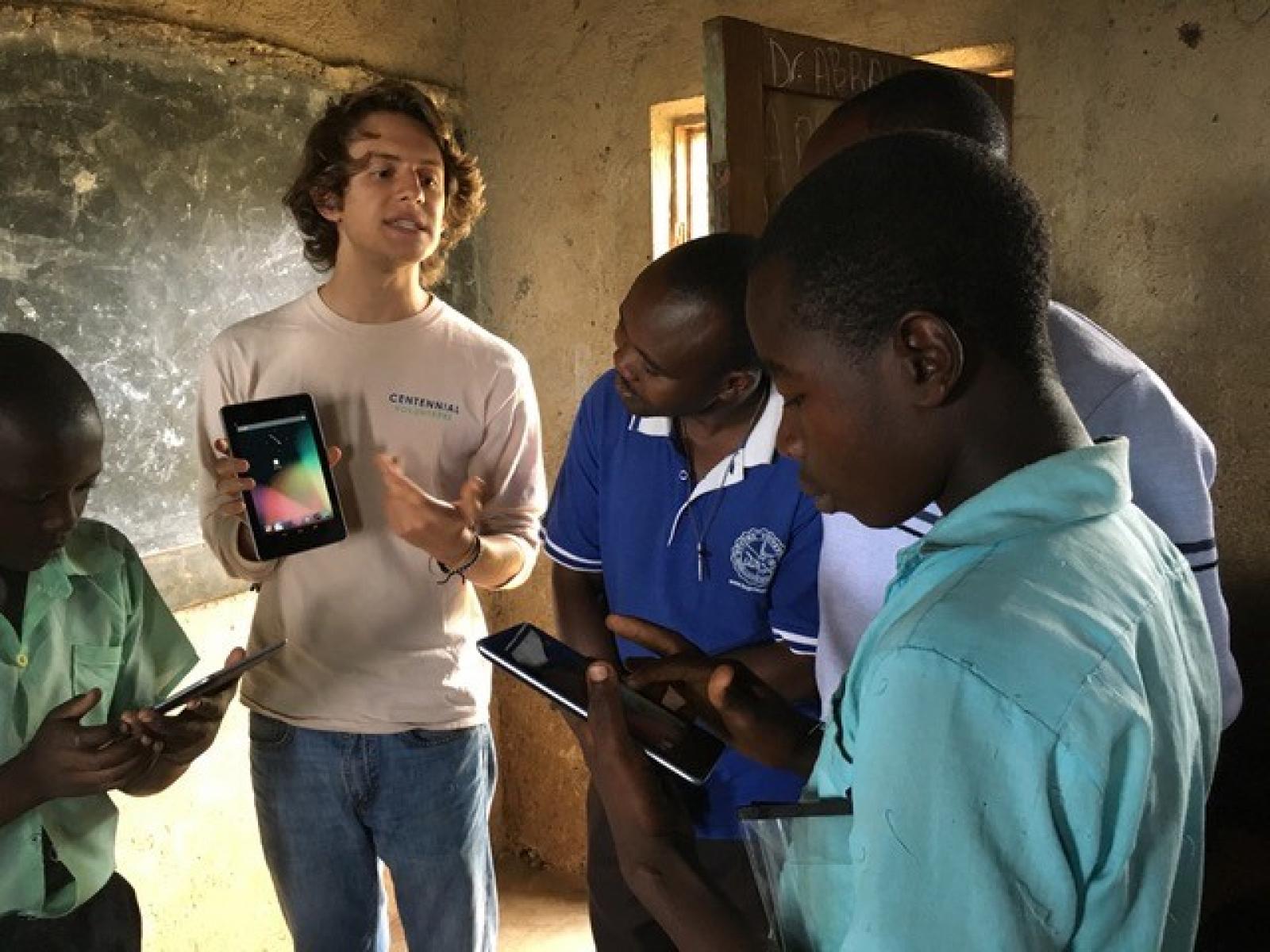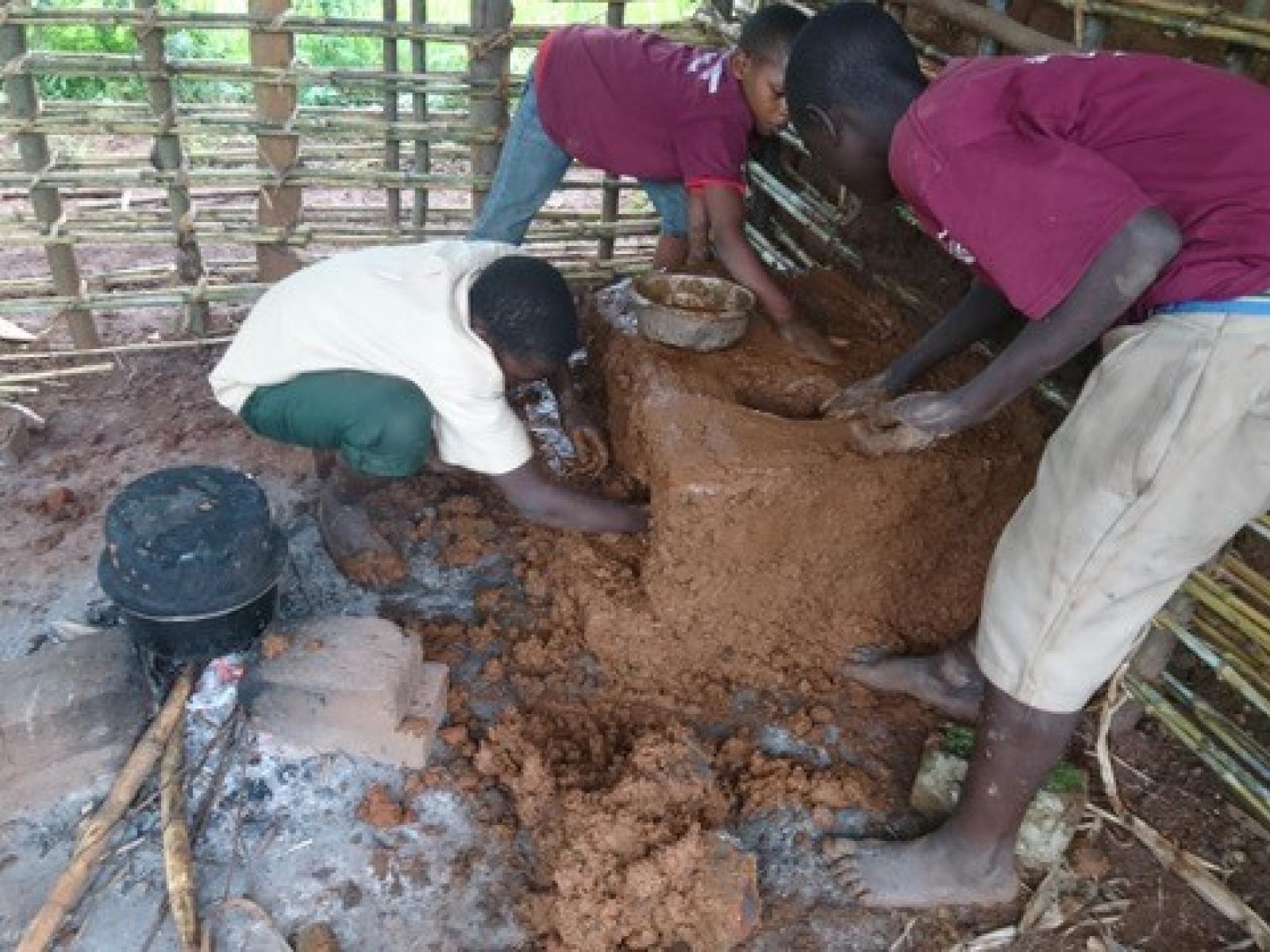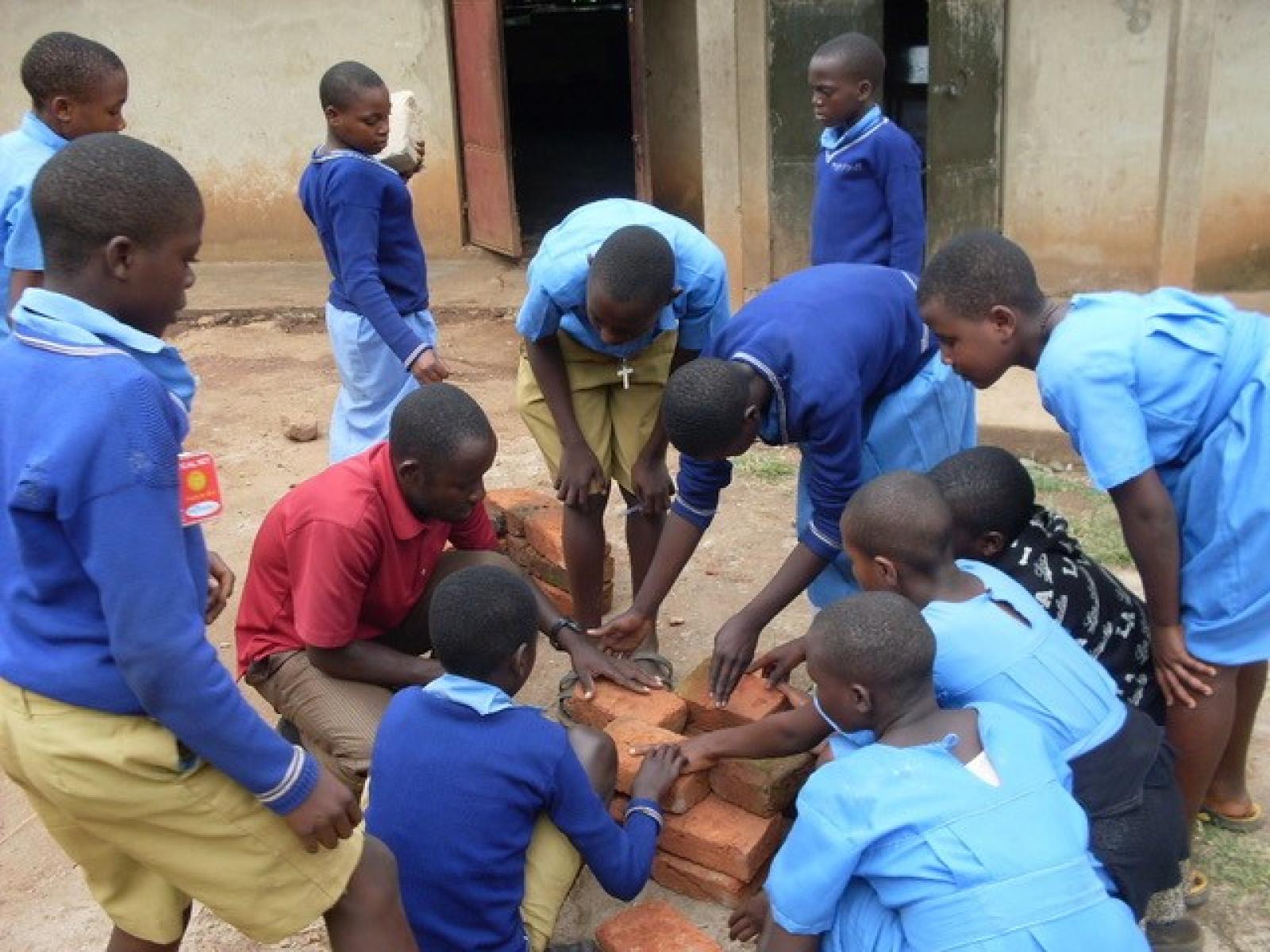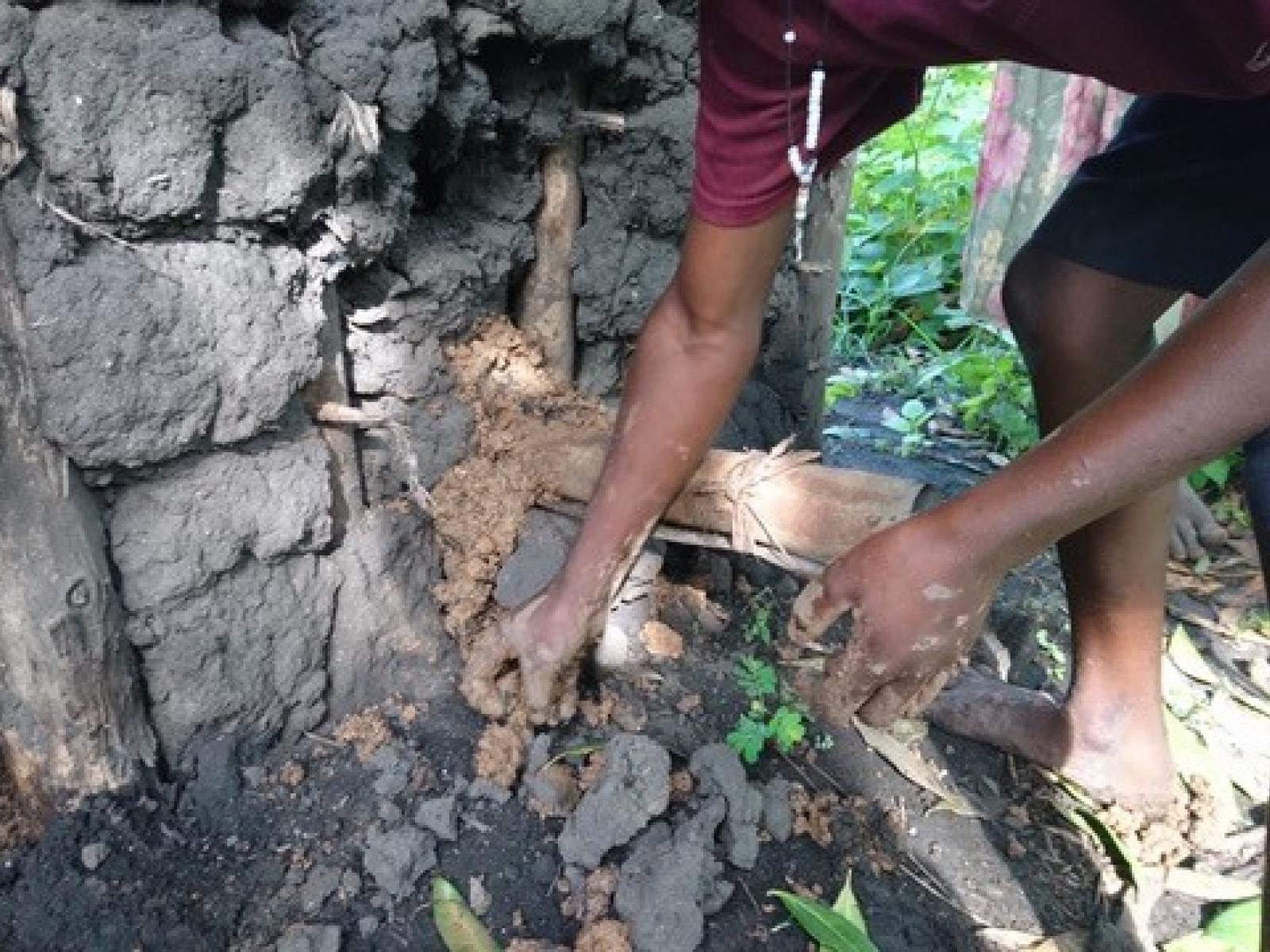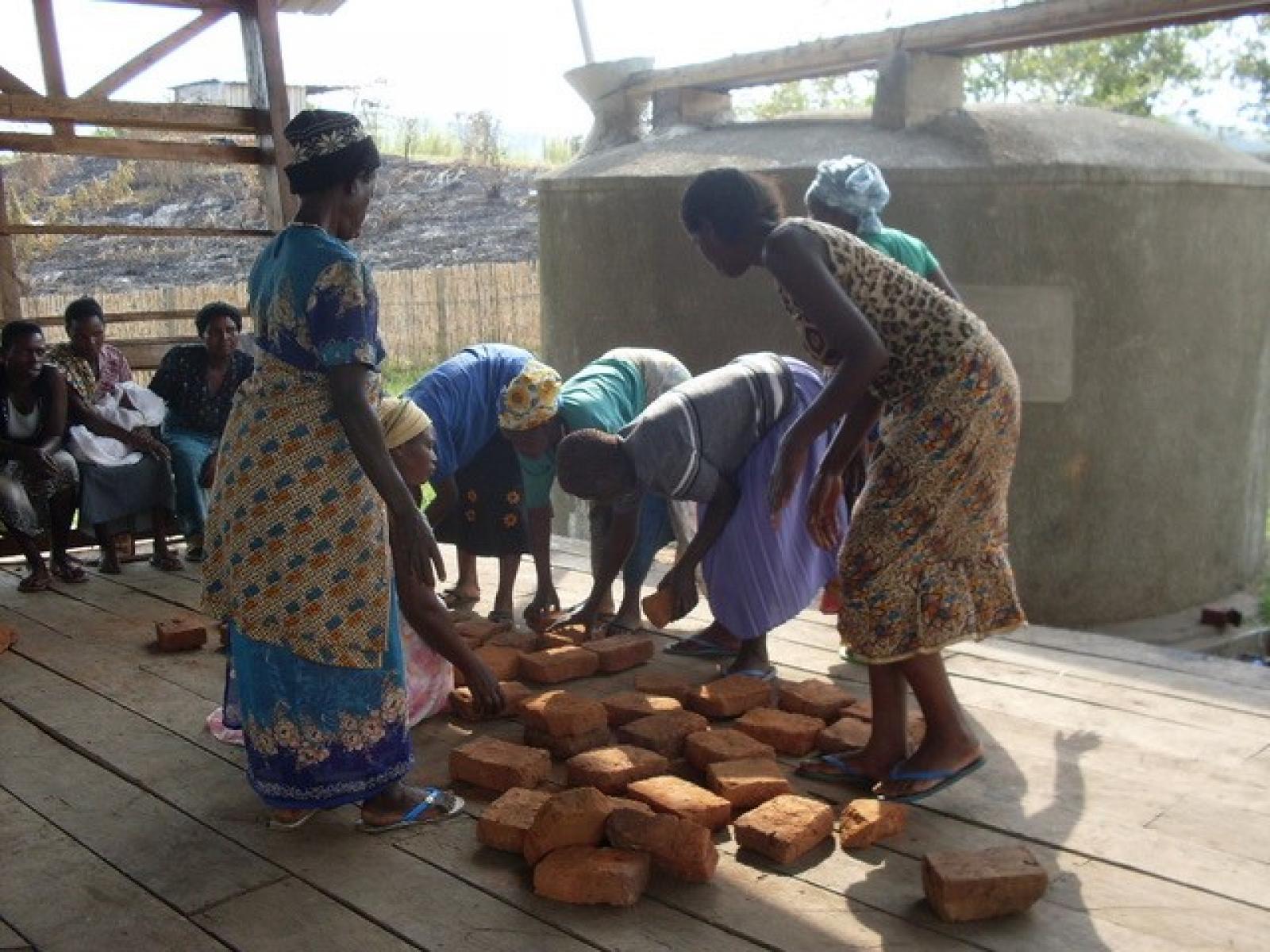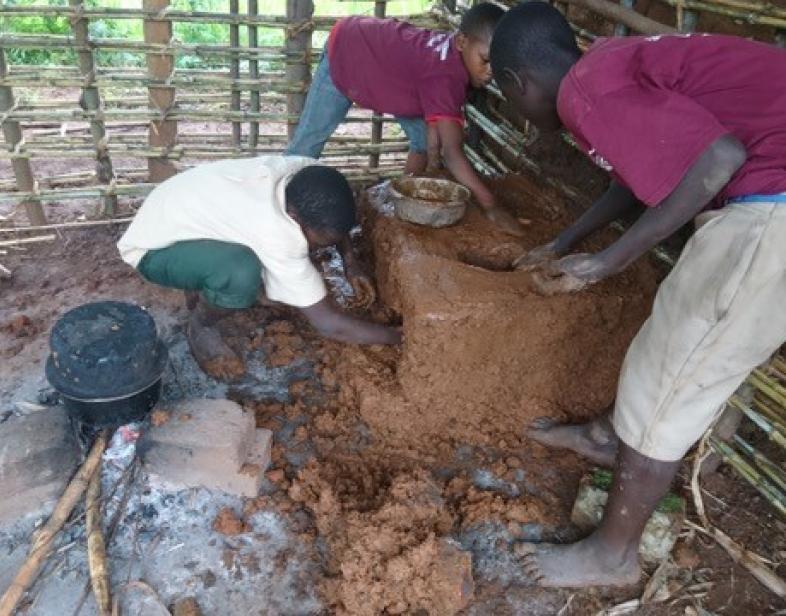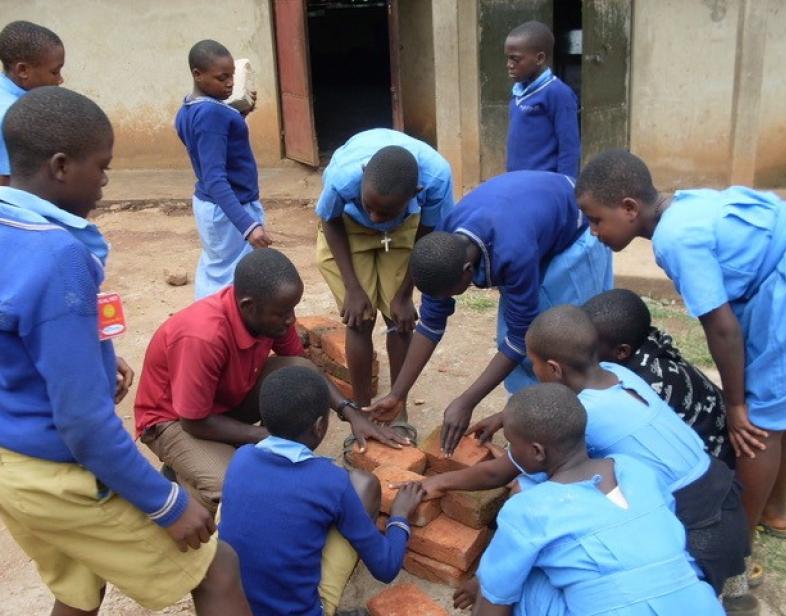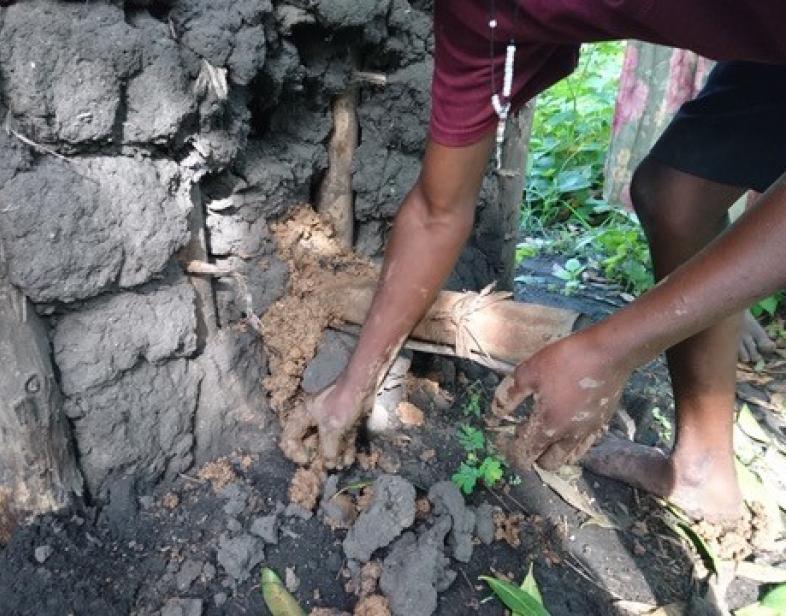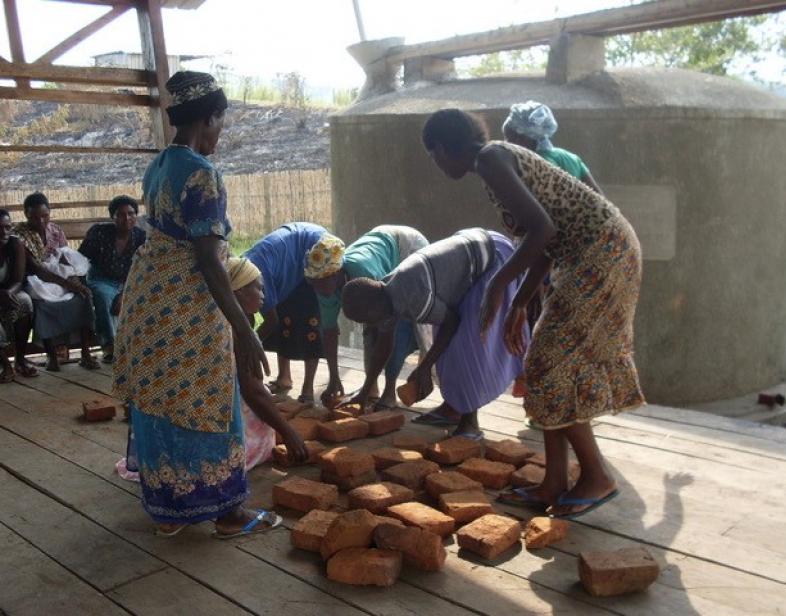An Overview Of Our Solution
Our innovative and original approach exploits the often untapped potential of children to transform adult behavior. When Ugandan schoolchildren market and build fuel-efficient, low emission cookstoves, it dramatically increases their consistent, long-term adoption by adults. Our multi-generational approach fights climate change now and in the future. Engaging children on the front line, gives them skills and attitudes critical to reducing greenhouse gasses in the long-term. In addition, they change their parent’s behavior now, leading to immediate positive impacts. Guided by committed teachers, Stove Building Teams, run entirely by students, infect their communities with their excitement and passion, stimulating escalating requests for low emission stoves. In 3 years they have built > 550 stoves in 14 communities, 85% still used after a year.
- Population Impacted: > 30,000
- Continent: Africa
Context Analysis
The behavior change targeted in this proposal is among >10,000 low-income subsistence farmers living next to Kibale National Park (KNP), Uganda. Lack of alternative energy sources limit 95% of households to using wood-burning cookstoves, >98% of which have been high-fuel-consumption, high-emission 3-stone fires. These traditional stoves are big contributors to global atmospheric carbon and diverse greenhouse gases, with negative effects not only on climate stability but also on respiratory health (especially in women and girls), deforestation and food security. Since the 1990s rainfall around Kibale has dropped by 20% and average local temperatures have risen, leading to reduced yields of traditional crops. Following a common trend in the tropics, 80% of the fuelwood is collected by children and particularly by girls, such that the time they spend gathering fuelwood measurably reduces their access to education.
Describe the technical solution you wanted the target audience to adopt
Our solution is a radical change towards 100% of households using only low-emission, fuel-efficient cookstoves as their primary means of cooking. In the past, beneficial low-emission cook-stoves have been introduced in numerous rural projects worldwide, but they have rarely been accepted in the long term even though fuelwood is almost always scarce and expensive. After initial interest women repeatedly return to traditional stoves such as high-fuel consumption, smoky 3 stone fires. Reasons range from poor stove design to preferences for traditional methods, and often so much fuel is gathered illegally that market forces have little impact. We needed a new approach to promote long-term acceptance and use of improved, climate-saving stoves.
Type of intervention
Describe your behavioral intervention
This intervention strives to make the use of 3-stone fires universally unacceptable around KNP by changing the behavior of adults now and of their children in the future. When we discussed climate change with children during environmental education projects in school Wildlife Clubs, we were struck by how excited they were to take the improved cookstove technology they had learned home. An existing program in our area, targets mainly adults and we believed that motivated young people could be an unexploited extra resource in the battle against climate change. We knew that active learning where their input significantly impacts outcomes, increases children’s engagement in conservation. So, a critical part of our approach, crucial to its success, is to involve them at every stage, from project administration to stove design, data collection and analysis, sourcing materials, and recruiting new “clients”. We thought that women would be more likely to continue to use stoves built by their children, and that children, losing free time to fuel collection, and understanding the environmental benefits of efficient stoves would pressure their mothers to utilize them. Parental involvement has been boosted by seeing their children learn new life skills with the potential to generate extra income. Parents also said that being a member of a stove team improved school performance. Involving a household adult in the construction ensures that stoves are repaired, minimizing their abandonment.
As needed, please explain the type of intervention in more detail
Emotional Appeals: Children respond to emotional appeals on behalf of the environment recruiting new households. Similarly, parents responded to less fuel gathering and better educational outcomes for their children
Social incentives: Societal norms critically impact perceptions of acceptable behavior. Behavior changes often result from networks of key groups and individuals whose influence changes these norms. Places on teams, competitive and highly valued by parents and communities, bestow key status on builders spreading acceptance of the technology from family to family. “I told everyone in the village so they could ask for stoves too”, “I saw my neighbor using the stove”, “My child told me about the stoves”.
Describe your implementation
Activities
a) Children learn about climate change, as members of one of 16 school Wildlife Clubs
b) Members compete for places on Stove Building Teams. Teams elect student committees responsible for all aspects of building. Teams are trained to build Improved Cookstoves using unfired mud bricks, collect questionnaire data on tablets and use GPS for mapping.
c) Community members request stoves and provide materials. Teams operate after school and at weekends supervised by a teacher who is their club Patron
d) Students GPS map all stoves they build and complete electronic questionnaires before building and at 6, and 12 months, inspecting for signs of use and damage.
e) New and old stoves are compared for emissions and fuel use with students and parents
f) Parallel activities related to improved stoves; tree planting and husbandry, reinforce the program
Key Success Factors
• Team places are voluntary and very competitive, students committed and in the most active schools receive more requests than they can handle.
• Teams built > 550 stoves in 3 years
• 85% of stoves are still in frequent use at 12 months
• Use of 3 stone fires fell substantially
• Students acquire new, potentially income generating skills which increase adult engagement and backing
• Comparing fuel consumption and emissions increases interest in children and adults
Obstacles and Solutions
Child Safety
a) All team members are immunized against tetanus.
b) Teams receive first-aid training and supplies, protective clothing and soap for washing hands and clothes
c) Building activities are outside the school day so do not interfere with education
d) Stove building is free to householders. No-one is making money – protecting students from possible exploitation.
Damaged Stoves are often abandoned
A household member is required to learn repair skills
Design Problems
Burnt food, smoke etc. Students work on better designs and procedures, e.g. incorporating chimneys, reducing heat
External connections
Recognizing that successful endeavors require collaboration and the importance for sustainability of engaging many stakeholders, we partner with a range of local NGOs, protected area authorities, village leaders and politicians, health and education authorities
Kibale Forest Schools’ Program – Ugandan registered NGO which implements and supervises all our programs
Uganda Wildlife Authority – Responsible for Uganda’s protected areas provides support, promotion, expertise and conservation rangers to give talks in schools.
Church of Uganda and SDA churches to spread word of stove building opportunities
Kabarole District Education Authority – Facilitates activities in schools
Kabarole District Health Authority – Provides vaccines, forst aid training and health personnel
Massachusetts Institute of Technology – Provides stove design assistance and sensors that measure emissions and use of stoves
National Geographic Society – funding for initial project in 14 schools
We connect with education and health authorities to improve access to education and health resources, with the Uganda Wildlife Authority to spread the use of improved stoves to their employees and ranger stations, to the wider community through radio broadcasts and community events.
Who adopted the desired behaviors and to what degree?
“I love my stove so much, it cooks better and faster”
School stove teams built >550 clean stoves in 3 years, 98% in households that had previously used only 3 stone fires as their primary method of cooking.
By 12 months after building 44 % of households used only clean stoves with 51% of households occasionally still using 3 stone fires, citing lack of power for some traditional food and lack of space for big pots.
96 % preferred the new stoves; 50% cited less wood and 19% less smoke.
Only 3% still used only 3 stone fires
69% of householders had no criticisms of the new stoves.
At 12 months 85% of stoves appeared to be in regular use. 37% had damage but in 91% of cases it had been repaired showing people considered them worth fixing
There was a 13% drop in reported respiratory diseases in households that had had the stoves for more than 6 months
81% of householders heard of the stove opportunity through schools, and 19% from friends, neighbors, church etc.
How did you impact natural resource use and greenhouse gas emissions?
Fuel consumption was measured by wood required to boil a liter of water. The stoves our children build use on average 30% less wood than 3 stone fires. Data show that an average sized 7-person rural Ugandan family uses 3,796 kg of wood per year.
81% of householders used the stoves > 7 times a week, 235 exclusively.
This level of use by approximately 446 families (81% of our sample) saved up to 564,339 Kg of wood per year.
Using a commercial emission-tester we showed the stoves cut smoke production, as measured by particulate emissions, by an average of 82% when compared to 3 stone fires.
Burning 1kg of wood produces an average of 1.8 kg of carbon dioxide. If we extrapolate the reduction in smoke to other emissions, we are potentially eliminating 2,498,892 kg of an important greenhouse gas per year.
These numbers do not take into account the vital role of trees in sequestering carbon. Less fuel use means less deforestation and each tree absorbs about 22kg carbon dioxide annually
What were some of the resulting co-benefits?
Reduced fuel use means less deforestation, less time collecting wood and fewer harmful emissions. This positively impacts the environment, access to education, health, agriculture and food security, all of which potentially help economic development. Kibale National Park, a prime example of a mid altitude rain forest, is an important biodiversity hotspot. The only place in East Africa that is home to healthy populations of chimpanzees (>1400, the largest population in Uganda) and elephant (>400), it contains many other rare animals, birds and plants. Fewer Illegal incursions into the forest to gather wood result in reductions in associated activities harmful to the forest: snares, logging, transmissible diseases and deforestation. School children, especially girls, spend less time collecting wood, households report fewer respiratory problems and more time and resources are available for education.
Sustainability
Stove cost is minimal and demand is high. Materials - mud, water and manure, scrap iron for chimneys - are supplied by the householder. Requests for stoves rose on average by 150% per year, with >30 untracked stoves built each year. We receive frequent requests to work with non-affiliated schools, women’s groups and churches.
Initial investment, supported here by grant funding from NGS, is required to share information, build relationships and trust with schools and community, and monitor progress.
75 % of rural children enter the work force from primary school and with demand for stoves high this technology, learned in school, has the potential to become rapidly market based. We already see people paying for stoves during school breaks
Return on investment
Costs of setting up the program of the made early stoves expensive - in 2015 and 2016 we spent $11,944 for personnel, transport, school and community meetings, evaluations, vaccination programs, soap, brick molds etc. In 2017 we spent only $2,600 and in the first 6 months of 2018 $541.
In total over 3 years each stove cost us $27: $45 in 2015 - 2016, $13 in 2017 and $7 in 2018
We spent another $6,000 on more sophisticated research - emission sensors, tablets, computers, research clearance, and additional salaries and transport, bringing the total for each stove built so far to $38 - $68 in 2015 and 2016, $13 in 2017 and $7 in 2018
We chose expensive but efficient methods of data collection but cheaper pen and pencil work as well
How could we successfully replicate this solution elsewhere?
This approach may be unique. We have not seen it elsewhere. We have shown that demand for improved stoves can be met by educational school-based programs. Schools everywhere are influential community centers and effective disseminators of information. 81% of families heard of the stoves through local schools and once up and running we have found the program almost runs itself.
Our approach is easily replicable with trained staff, once schools and community are on board which takes time - up to 3 years of investment and support is needed for new initiatives to become an accepted, sustainable part of school culture. Working with established school institutions, in this case Wildlife Clubs, leads to rapid acceptance by staff as we are not adding to an already heavy work load.
Partnering with teachers, community leaders and education, health and protected area authorities is vital. Funding is required for meetings, training, initial supervision, transport, materials and evaluation
